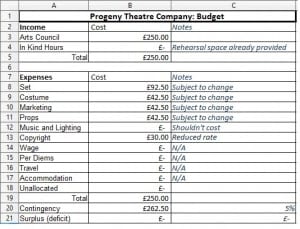During rehearsal time, I have been thinking about monologues and why we use them. I decided to do a short post on what a monologue is and why we have decided to use one in our production. I have included some brief research on an opinion which opposes to the use of monologues.
“A monologue is a lengthy speech by a single person” (Abrams and Harpham, 2009, p.85)
“The monologue differs from the dialogue in the lack of verbal exchange and in that it is of substantial length and can be taken out of the context of conflict and dialogue” (Pavis, 1998, p.218)
As I see it, a monologue is a theatrical device which is used to portray a character’s inner feelings. You do not necessarily come across monologues in every play you see or read, yet they can be used as one way of just one character communicating with the audience, whether it be directly or indirectly.
In Scene Two of ‘A Gothic Tale’, my character, The Countess, delivers a monologue. It is a long speech which introduces herself indirectly to the audience. The monologue gives a brief explanation as to who she is and what she is doing. The speech also foreshadows the rest of the scene, and partly the rest of the play.
It is questionable, however, whether or not monologues should be used in theatre at all. As Pavis states, “[Monologues] are often condemned or restricted to a few indispensable instances. Besides the fact that it is static, even boring, it is seen as improbable. A man alone is not expected to talk aloud, so that showing a character confiding his feelings to himself is easy to ridicule as being unrealistic and improbable. (1998, p.218)
In this case, the monologue is used not only to give depth to the Countess, but it is also used to allow the audience to clearly see the change in her personality later on in the play. Her monologue introduces her as a newly married woman who is vulnerable and shy. Later on however, she is quite the opposite. Her speech is there as an inner consciousness, questioning everything that she is worried about. At this point in the play, she is about to lose her virginity to the Count. She has a few moments on her own where she is able to think about what is happening and what is expected from her, and the monologue reflects her feelings towards the situation. This also allows the audience to get to know, what they think, is her true character.
Although not all playwrights agree with using monologues, I believe that the Countess’ speech fits well in our piece. She is the only character with a monologue, and she is the only character who changes dramatically. Her honesty in the monologue is able to fool the audience who later on find out that she has turned into a much darker character.
Works Cited
Abrams, M.H and Harpham, G (2009) A Glossary of Literary Terms. Boston USA: Cengage Learning Inc.
Pavis, P (1998) Dictionary of the Theatre. Terms, Concepts and Analysis. Toronto: University of Toronto Press Inc.
Francesca Simeoli
Word Count: 490

